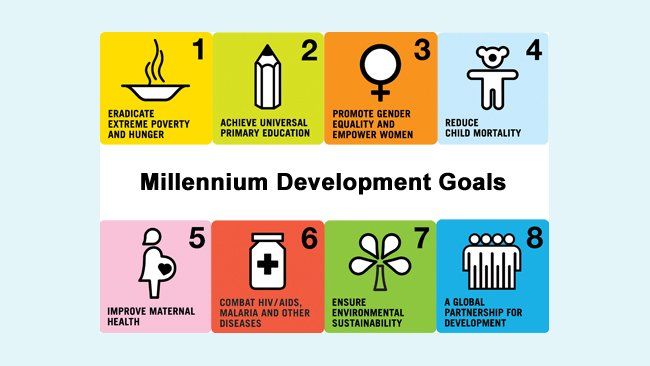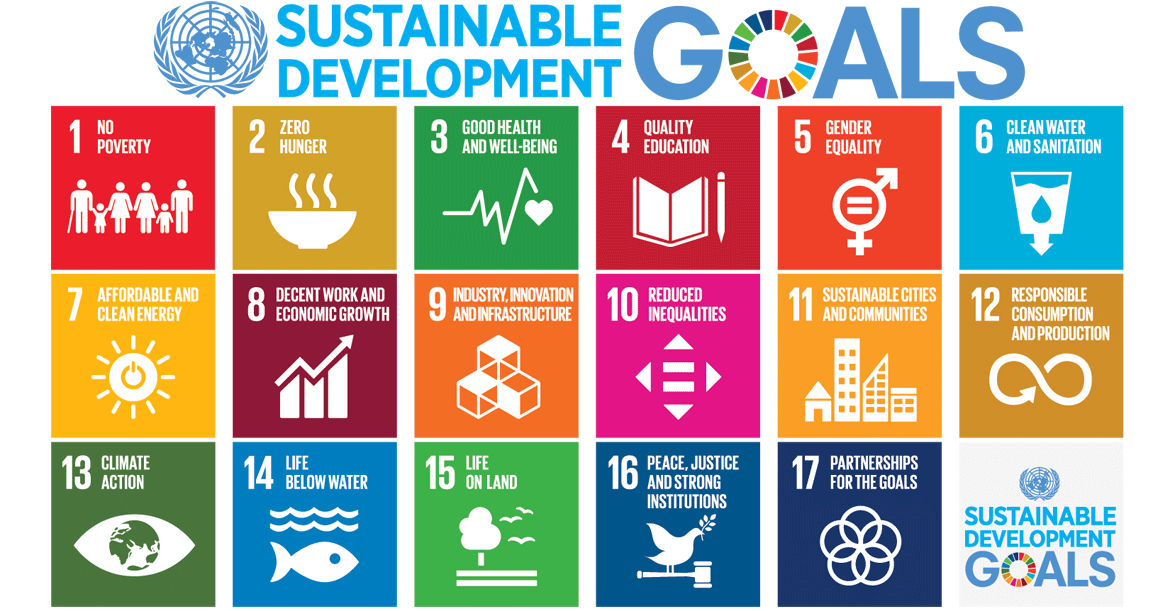What is Sustainability? A Definition and Brief History of How it Came to Be
- By Kevin Foley
- •
- 22 Jan, 2019

This article is the first in a three-part “Introduction to Sustainability” Series covering:
- What sustainability is and how it evolved into what it is today
- How sustainable business became mainstream and why it's your greatest opportunity
- How to get started on your sustainability journey
The origin of “sustainability” comes from the word “sustainable,” which, according to dictionary.com, means “the ability to be sustained, supported, upheld, or confirmed.” It is derived from the words “sustain” + “able,” and usage dates as far back as the early 17th century. Sustainability is essentially another way of saying “built to last.”
1960s - 1970s: Birth of Sustainability As We Know It
Although the origins of the word date back over 400 years, usage of the word “sustainable” in connection with the environment didn’t occur until much later. According to the Journal of Agriculture and Environmental Ethics research paper The Evolution of Sustainability, the word “sustainability” was first used in the context of discussing man’s future on this planet in 1972. The word appeared in the book Blueprint for Survival (originally published by the Ecologist).
This same year, the Club of Rome, in collaboration with the Massachusetts Institute of Technology (MIT), released a now-famous report. The report was called “Limits to Growth,” and it used computer modeling to explore the interaction between exponential growth and finite resources. The simulation factored in variables such as population increase, food production, industrial output, pollution generation, and non-renewable resource depletion. The results were staggering and the message was clear: human activity is having a major impact on the planet.
The findings discussed in Limits to Growth bring to mind a passage from Candice Millard’s book River of Doubt, describing fast-growing trees observed during Theodore Roosevelt's scientific expedition into uncharted Brazilian Rainforest in 1914.
- The release of Rachel Carson’s book, Silent Spring (Pertaining to DDT and damage to wildlife, humans and the environment ~1962)
- The release of the “Earthrise” photo from Apollo 8’s mission (~1968)
- The Santa Barbara Oil Spill (~1969)
- The first “Earth Day” (~1970)
- The creation of the US Environmental Protection Agency ( ~1970)
- The passage of the Clean Air (~1970) and Clean Water (~1972) Acts
- The UN's Global Conference on the Human Environment (~1972)
- The release of “Limits to Growth” by The Club of Rome and MIT (~1972)
- The passage of the US Endangered Species Act (~1973)
1980s: “Sustainable Development” is Invented
The Brundtland Report was one of the first coordinated international efforts to develop a global agenda for environmental change. It awoke the public to the notion that humankind must think about the generations to come and the world they would live in. The report pinpointed the swath of environmental problems facing our planet and offered up a detailed framework for addressing them.
Two notable outcomes of the report were:
- It inspired the implementation of regular international conferences to review environmental progress and highlighted the need for coordinated political action.
- It identified new actors in the environmental effort, including Universities, Private Enterprises, Non-Governmental Organizations (NGOs) and Individuals.
While the report brought up numerous critical issues like food security, biodiversity, global economic development, and deforestation, climate change took center stage. It has firmly planted itself there for over two decades and continues to remain the defining challenge of our generation.

1990s: Climate Change Gains a Foothold
A major outcome of this Summit was the establishment of the United Nations Framework Convention on Climate Change (UNFCCC), whose primary objective is to stabilize greenhouse gas concentrations in the atmosphere. Parties to the convention have met every year since 1995 in Conferences of the Parties (COP) to assess progress.
The third conference (COP3) was of particular significance, resulting in the Kyoto Protocol. The Kyoto Protocol established legally binding obligations for developed countries to reduce their greenhouse gas emissions to five percent below 1990 levels between 2008 and 2012. Although adopted in 1997, the Kyoto Protocol did not technically go into effect until at least 55 countries (accounting for 55 percent of the world’s emissions in 1990) had ratified it. This occured in 2005.
The Kyoto Protocol ultimately failed to reach its initial target, but laid the foundation for a more comprehensive climate agreement that would eventually replace it.
This decade also witnessed the creation of the Intergovernmental Panel on Climate Change (IPCC). It was formed by the United Nations Environment Programme (UNEP) and the World Meteorological Organization (WMO) in 1988. Its purpose was, and is, to provide policymakers with regular scientific assessments on climate change, it’s implications, and potential future risks. It also puts forward adaptation and mitigation options. Between 1988 and 2018, the IPCC produced six assessment reports in support of UNFCCC efforts, and they, along with these reports have had great influence over global policy.
2000: Millennium Development Goals Created
However, environmental sustainability remained a major focus, and the 7th goal was to Ensure Environmental Sustainability. The 7th MDG pertained to climate change, resource depletion, the preservation of biodiversity as well as terrestrial and marine areas, and water quality.
This MDG extended beyond climate change and established sustainability issues as global challenges that deserved attention.
2015: Sustainable Development Goals and Climate Change Continued
The original year 2000 Millenium Development Goal number 7) Ensure Environmental Sustainability, was deconstructed into several component parts in 2015, with each part being made into its own goal. The new environmental sustainability goals created included:
6) Clean Water and Sanitation
7) Affordable and Clean Energy
11) Sustainable Cities and Communities
12) Responsible Production and Consumption
13) Climate Action
14) Life Below Water
15) Life on Land
The expansion of the original Ensure Environmental Sustainability goal into seven new goals demonstrates the growing importance of sustainability and resource conservation on the global agenda.
This agreement is particularly notable because participation was completely voluntary. It demonstrated that countries around the world with varying interests recognized the importance of climate change and were committed to coming together to tackle this shared challenge.
2018: Time Is Running Out
The results of the IPCC’s 6th assessment report were eye-opening, yet perhaps not completely surprising. Existing actions to address climate change aren’t enough and the negative impacts of our changing climate continue to increase. The world’s leading scientists warn that we have 12 years to act before catastrophic damage takes place. Co Chair of the IPCC Working Group summarized her thoughts in a single sentence:
2018 was an equally big year for California, which hosted the Global Climate Action Summit. The summit aimed to galvanize climate change mitigation efforts across all sectors. California also set some ambitious climate change and clean energy targets of its own. For more info on California’s statewide sustainability goals, check out our previous article here.
Also in 2018 was the United Nations 24th Conference of the Parties (COP24), which took place in Katowice, Poland. Discussions at the conference centered around the Paris Agreement and climate change. One of the most productive outcomes of COP24 was the development of a technical rulebook with detailed guidelines on how to implement the 2015 Paris Agreement.
In spite of this achievement, COP24 was not without tension. Countries grappled over details of the Paris Rulebook and how to ensure greater transparency in reporting emissions. The stakes are high and while every stakeholder believes these issues are important, the sense of urgency surrounding action on climate change tends to vary by country. In spite of the obstacles being faced, global leaders continue to show resilience and commitment to working toward a solution.
This year’s conference brought in a diverse range of supporters. One notable attendee was famous naturalist and broadcaster David Attenborough. While he is most well known for his narration of BBC’s Planet Earth Series, he is also a steadfast supporter of taking immediate action on climate change, and believes it is the greatest threat to mankind in thousands of years.

Where Businesses Fit Into the Story
Businesses manage most of the world’s infrastructure, are responsible for 70% of global CO2 emissions and their ability to influence a positive outcome is unparalleled. Even the 1987 Brundtland Commission recognized that moving the needle on sustainable development could not be left to regulators and policy-makers alone. The foreword written by Gro Harlem, the chair of the Brundtland Commission, read:

Conclusion: 2019 and Beyond
As Seneca so eloquently said 2,000 years ago, It’s time to “turn words into works.” Whether you are acting on behalf of yourself, your community, a local or national government or a business, your actions will ultimately determine how this story ends.
We hope you found this article helpful and gained a more thorough understanding of what sustainability is, how it developed into what it is today, and why businesses such as yours have started to become such an integral part of our world’s sustainability story.
While this article offered a “macro” or “big picture” view of sustainability, the second article in our three-part “Introduction to Sustainability” Series will offer a more “micro” or “business focused” view on the topic. It will delve into how sustainable business became mainstream and identify specific factors that led to its adoption. The second article will also highlight why sustainability is one of the greatest opportunities for your business to reach a new level of success and impact in the coming years.
For supplemental reading, this article from the guardian presents a thorough timeline of business action on sustainability, and Harvard Business Review wrote a thoughtful piece on our current situation. Find it here.
If you liked what you read and want to learn more, please sign up for our email list and share it with others, or follow us on instagram to get notified of our newest articles and other updates.

As an adult watching the new remake nearly 25 years later, I was equally captivated.
As most who have seen the original Lion King can attest, it is chock full of invaluable life lessons. It effectively illustrates examples of leadership, courage, forgiveness, justice, faith and purpose, to name just a few. Like the original film from 1994, the remake did an excellent job of capturing and illustrating all of these lessons. This time around, one lesson that really stuck out to me, which I hadn’t caught in years past, was that of sustainability.
As a 31 year old who has dedicated my entire professional career to sustainability, I am constantly on the lookout for little gems of sustainability wisdom. Whether or not I intend to, I view just about everything through that lens…including Disney remakes of old classics. In this new version of The Lion King, I found one of these gems that I am always looking for. As a quick aside, if you have not seen the Lion King (original or remake), some of what lies ahead could spoil some of the movie for you. If you fall into that category, proceed with caution.
While in the movie theater, I didn’t have a pen and paper with me, and the lights weren’t on...so I was unable to take any notes or write down any quotes related to the gems of sustainability wisdom I witnessed. Since I was still thinking about the movie weeks later, I decided to go back and watch the original movie at home, so that I could take notes, pause and rewind as needed, and see if my observations about this classic movie truly held their own.


Earlier this month I completed an 80-hour wilderness medicine training course. It was filled with dozens of lectures, quarts of fake blood and no shortage of hands-on practice - both as a rescuer and a victim. There were approximately 22 students and two seasoned instructors. My classmates came from many different backgrounds, and included backcountry trip leaders and guides, search and rescue volunteers, nursing students, park rangers, and even one sustainability manager & consultant (guess who that was?). The 80 hour course was split evenly between in-class lecture and hands-on practice.





